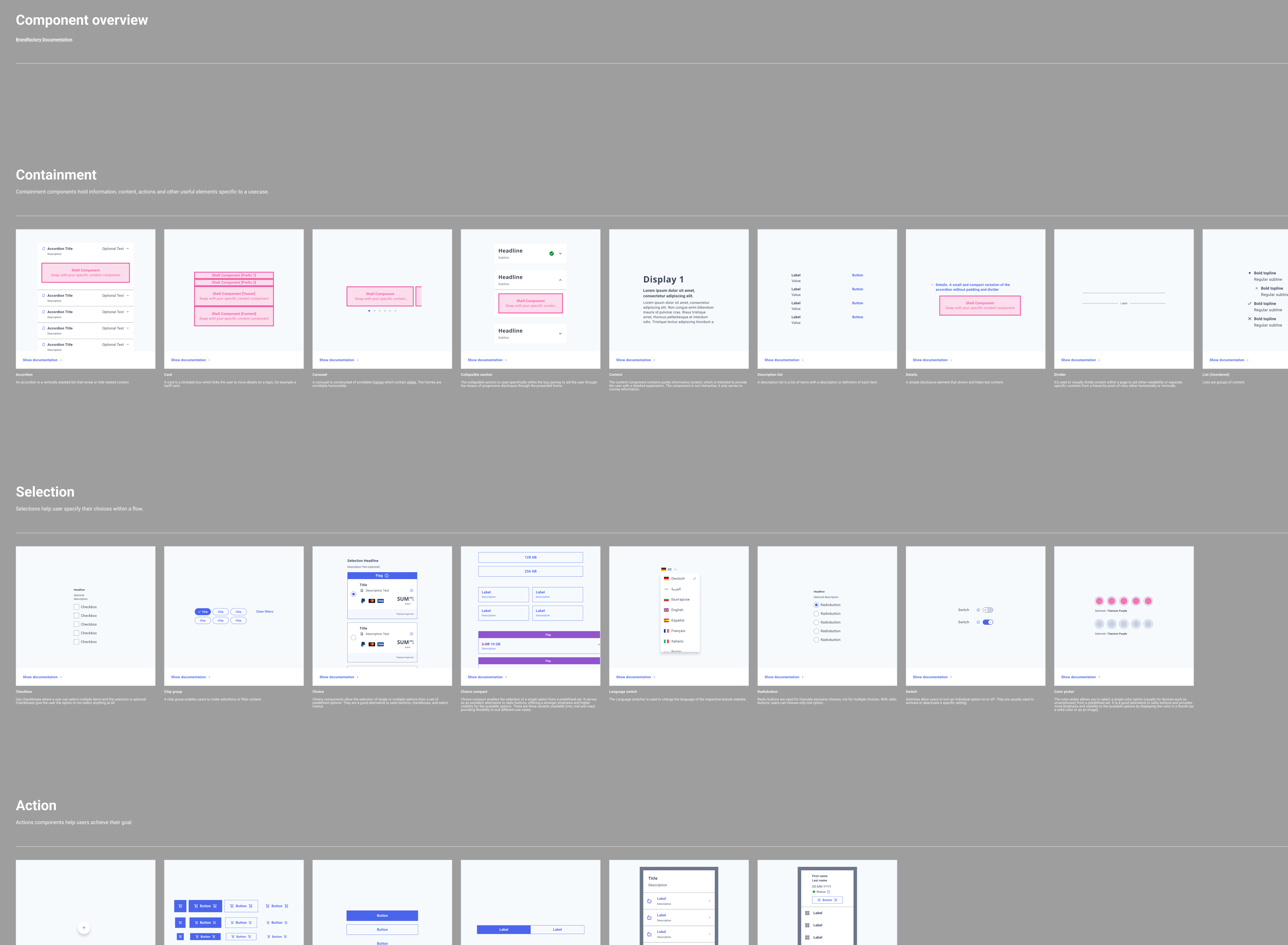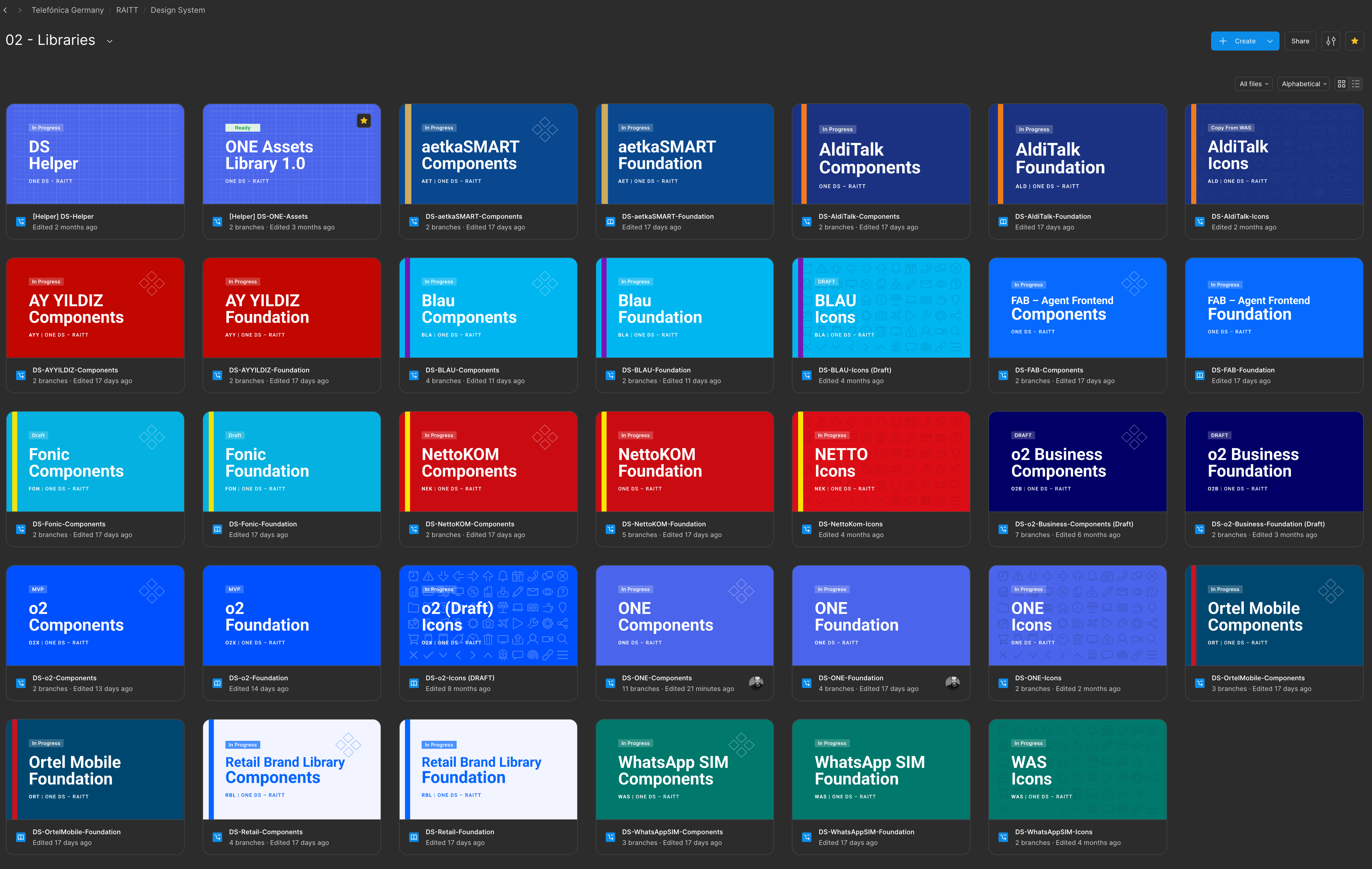Telefónica – Design System Evolution
Case Study – Scaling design for consistency and speed
CONTEXT
The Telefónica Design System is used across 12 brands (3 owned and 9 partner brands), comprising more than 75 components. It is actively used by 50+ UX/UI designers to design products across the ecosystem. The challenge was to scale the system sustainably while improving collaboration between design and development teams.
CHALLENGE
- Managing 12 separate Figma libraries meant every update had to be made 12 times → high maintenance effort and inconsistencies
- The design-to-code handover was error-prone
- The token architecture had become overly complex and difficult to maintain
- Component documentation was fragmented and lacked structure
APPROACH
- Introduced Figma Dev Mode and “Inspect Mode” in the Token Studio plugin to enable a more accurate handover
- Established a new documentation structure including workflows, creation and review guidelines
- Rebuilt the design tokens with a clear layer structure, a refined alias level, and comprehensive documentation
- Modernized and tokenized components (e.g. Checkbox, Input, Select, Tabs, Carousel, etc.)
- Conducted workshops on token architecture and Figma Variables
IMPACT
- Migrated from 12 separate Figma libraries to one centralized library
- Achieved a 10x efficiency increase in maintenance and development — updates now made only once
- Significantly improved consistency and quality across all brands
- Strengthened the white-label approach, enabling faster rollouts for partner brands
- Ensured long-term scalability, reducing complexity and accelerating innovation
CLIENT:
INDUSTRY:
Telecommunications
MY ROLE:
Senior Design System Designer / DesignOps
TEAM:
9 members (Component Designer, Token Architect, Developer, Product Owner)
PERIOD:
2024- 2025
CATEGORY:
Strategy, Design System, Tokens & Components






